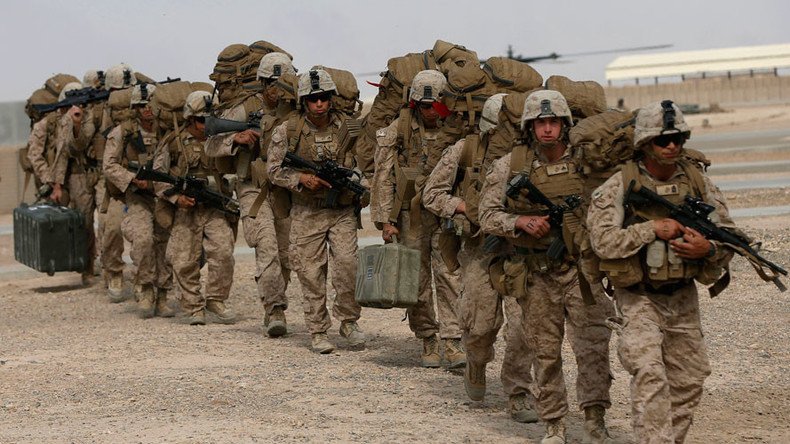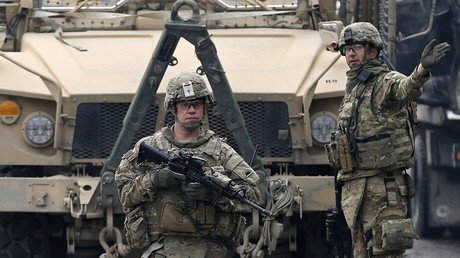US shifts troops in Afghanistan as Taliban makes gains

Some 100 US troops have been sent to Lashkar Gah, capital of Afghanistan’s Helmand province, where the Taliban is advancing and opium cultivation is booming. A new report shows various support contractors outnumber US troops in the country more than three to one.
The US contingent has arrived in Lashkar Gah with a mission to provide training and support to the Afghan security forces, Brigadier-General Charles Cleveland, spokesman for the US mission in Afghanistan, said Monday.
The Afghan authorities are looking to have more US troops sent to Helmand, since much of the province has been overrun by Taliban insurgents in recent weeks. Fighting “on several fronts” has closed many roads and highways in the province, the head of Helmand’s provincial council, Kareem Atal, told AP.
“Around 80 percent of the province is under the control of the insurgents,” Atal said. “There are a number of districts that the government claims are under their control, but the government is only present in the district administrative center and all around are under the control of the insurgents.”
#Resolute Support: Despite #Taliban attack on various provinces in #Afghanistan, their goal to capture any major terrtoriy has failed
— Lina Rozbih (@LinaRozbih) August 22, 2016
The majority-Pashtun province is also a major center for opium cultivation, with the annual crop valued at an estimated $3 billion. Though the Taliban outlawed opium in 2000, they reversed the decision after US and NATO forces invaded Afghanistan following the 9/11 terrorist attacks. Heroin produced from Afghan poppies is now a primary source of funding for the insurgency, US officials say.
Most US combat troops left Afghanistan at the end of 2014, but the planned withdrawal of the remaining “advisers” deployed as part of the mission dubbed Resolute Support has stalled, due to the inability of Afghan government forces to defeat the Taliban.
Original drawdown plans called for reducing the troop presence to 5,500 by the end of 2016, but in October last year the Obama administration announced that it would keep 8,400 US troops in Afghanistan through the end of 2017, and maintain some kind of combat presence in the country “indefinitely.”
In addition to the US military personnel, there are currently some 29,000 “defense contractors” in Afghanistan, according to the latest report by the Congressional Research Service. That translates into slightly more than three contractors per every official member of the US military.
About a third of the contractors are American and less than a quarter of them are providing security services, noted the report, published last week. Pentagon records show approximately 1,600 translators, 1,700 construction workers, 2,200 “base support professionals” and 12,000 working in logistics and maintenance services.
The number of contractors employed by the US Department of Defense peaked in early 2012, when some 117,000 contractors were servicing 88,000 US troops, according to the report.
In Iraq, where 2,500 contractors are working with almost 4,000 US troops “advising and assisting” the country’s security forces in the fight against Islamic State (IS, formerly ISIS/ISIL), the CRS report noted.













